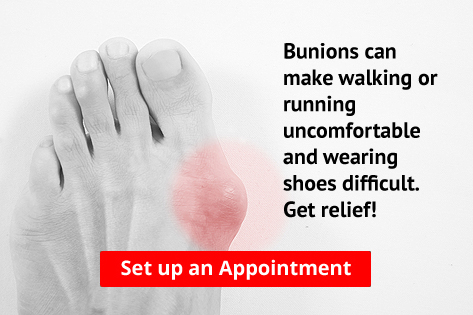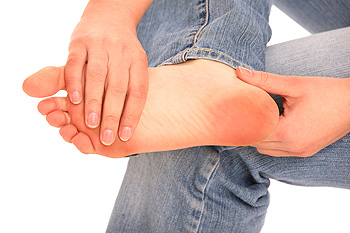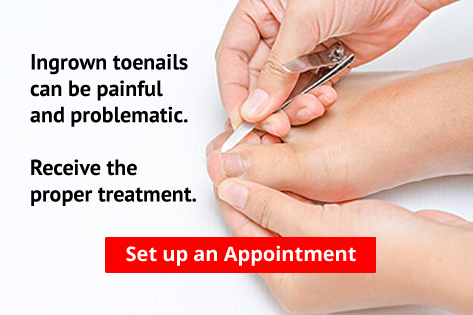Blog
Why Stretching Is Important Before and After Running
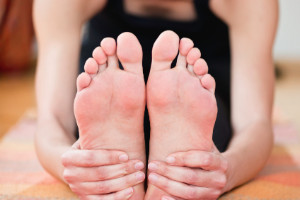 People who experience running injuries may find that they lose the motivation to continue running or jogging. Additionally, this type of injury can affect everyday activities, and may cause severe pain and discomfort. The average runner typically runs 1400 steps per mile. With that in mind, it is important to properly stretch the muscles, tendons and ligaments to prepare for your activity. This can be accomplished by warming up and cooling down before and after running. Flexibility can be maintained by performing lunges, and mimicking movements such as marching. The bones can become stronger as strength training is practiced, in addition to increased running efficiency. If you would like more information about how running injuries can affect the feet, please consult with a podiatrist.
People who experience running injuries may find that they lose the motivation to continue running or jogging. Additionally, this type of injury can affect everyday activities, and may cause severe pain and discomfort. The average runner typically runs 1400 steps per mile. With that in mind, it is important to properly stretch the muscles, tendons and ligaments to prepare for your activity. This can be accomplished by warming up and cooling down before and after running. Flexibility can be maintained by performing lunges, and mimicking movements such as marching. The bones can become stronger as strength training is practiced, in addition to increased running efficiency. If you would like more information about how running injuries can affect the feet, please consult with a podiatrist.
Exercising your feet regularly with the proper foot wear is a great way to prevent injuries. If you have any concerns about your feet, contact one of our podiatrists of New York Foot and Ankle. Our doctors will treat your foot and ankle needs.
How to Prevent Running Injuries
Many common running injuries are caused by overuse and overtraining. When the back of the kneecap starts wearing out and starts causing pain in your knee, this is commonly referred to as runner’s knee. Runner’s knee is a decrease in strength in your quadriceps and can occur if you’re not wearing properly fitted or supporting shoes. To prevent runner’s knee, focusing on hip strengthening is a good idea, as well as strengthening your quads to keep the kneecaps aligned.
What Are Some Causes of Running Injuries?
- One cause of a common running injury is called iliotibial band syndrome.
- Plantar fasciitis is also another common injury.
- Stress fractures can occur from overtraining, lack of calcium, or even your running style.
Best Ways to Prevent Running Injuries
- Wear footwear that fits properly and suits your running needs.
- Running shoes are the only protective gear that runners have to safeguard them from injury.
- Make a training schedule. Adding strengthening exercises as well as regular stretching can help keep you strong and limber and can lessen the possibility of injuries.
- Stretching keeps muscles limber; this will help you gain better flexibility.
If you have any questions please feel free to contact one of our offices located in Franklin Square, Bethpage, Brooklyn, and Massapequa, NY . We offer the newest diagnostic and treatment technologies for all your foot and ankle needs.
Are Bunions Affecting Your Everyday Life?
Are Bunions Affecting Your Everyday Life?
The Importance of Caring for Foot Wounds
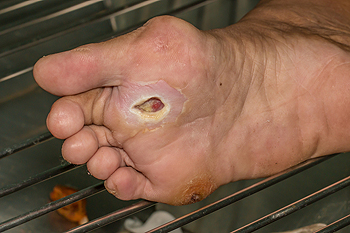 It is extremely important to seek immediate care once you notice you have a wound on your foot, especially if you are diabetic. If left untreated, and not healed properly, it is likely for a foot wound to turn into a foot ulcer. When this occurs, there is a chance that the ulcer may get infected, and in severe cases, this may lead to the need for amputation. Wounds may consist of any breaks in the skin, including cuts, blisters, cracked skin, ingrown toenails, and loss of skin due to a corn or callus. You may experience swelling, redness, pain, the appearance of pus, and the feeling of warmth on the skin as a result of having a wound. As mentioned above, those with diabetes must be diligent with checking on the health of their feet, as they tend to have less feeling in the foot region due to common circulation complications. If this is experienced, it’s possible a wound may form and go unnoticed if not directly felt. Wearing shoes that leave ample room for your toes, as well as avoiding walking around barefoot can help in preventing the formation of wounds. If you have a wound and would like to discuss your treatment options, we suggest you consult with a podiatrist for professional care and guidance.
It is extremely important to seek immediate care once you notice you have a wound on your foot, especially if you are diabetic. If left untreated, and not healed properly, it is likely for a foot wound to turn into a foot ulcer. When this occurs, there is a chance that the ulcer may get infected, and in severe cases, this may lead to the need for amputation. Wounds may consist of any breaks in the skin, including cuts, blisters, cracked skin, ingrown toenails, and loss of skin due to a corn or callus. You may experience swelling, redness, pain, the appearance of pus, and the feeling of warmth on the skin as a result of having a wound. As mentioned above, those with diabetes must be diligent with checking on the health of their feet, as they tend to have less feeling in the foot region due to common circulation complications. If this is experienced, it’s possible a wound may form and go unnoticed if not directly felt. Wearing shoes that leave ample room for your toes, as well as avoiding walking around barefoot can help in preventing the formation of wounds. If you have a wound and would like to discuss your treatment options, we suggest you consult with a podiatrist for professional care and guidance.
Wound care is an important part in dealing with diabetes. If you have diabetes and a foot wound or would like more information about wound care for diabetics, consult with one of our podiatrists from New York Foot and Ankle. Our doctors will assess your condition and provide you with quality foot and ankle treatment.
What Is Wound Care?
Wound care is the practice of taking proper care of a wound. This can range from the smallest to the largest of wounds. While everyone can benefit from proper wound care, it is much more important for diabetics. Diabetics often suffer from poor blood circulation which causes wounds to heal much slower than they would in a non-diabetic.
What Is the Importance of Wound Care?
While it may not seem apparent with small ulcers on the foot, for diabetics, any size ulcer can become infected. Diabetics often also suffer from neuropathy, or nerve loss. This means they might not even feel when they have an ulcer on their foot. If the wound becomes severely infected, amputation may be necessary. Therefore, it is of the upmost importance to properly care for any and all foot wounds.
How to Care for Wounds
The best way to care for foot wounds is to prevent them. For diabetics, this means daily inspections of the feet for any signs of abnormalities or ulcers. It is also recommended to see a podiatrist several times a year for a foot inspection. If you do have an ulcer, run the wound under water to clear dirt from the wound; then apply antibiotic ointment to the wound and cover with a bandage. Bandages should be changed daily and keeping pressure off the wound is smart. It is advised to see a podiatrist, who can keep an eye on it.
If you have any questions, please feel free to contact one of our offices located in Franklin Square, Bethpage, Bronx, and Brooklyn, NY. We offer the newest diagnostic and treatment technologies for all your foot care needs.
Read more about Wound CareThe Importance of Caring for Foot Wounds
 It is extremely important to seek immediate care once you notice you have a wound on your foot, especially if you are diabetic. If left untreated, and not healed properly, it is likely for a foot wound to turn into a foot ulcer. When this occurs, there is a chance that the ulcer may get infected, and in severe cases, this may lead to the need for amputation. Wounds may consist of any breaks in the skin, including cuts, blisters, cracked skin, ingrown toenails, and loss of skin due to a corn or callus. You may experience swelling, redness, pain, the appearance of pus, and the feeling of warmth on the skin as a result of having a wound. As mentioned above, those with diabetes must be diligent with checking on the health of their feet, as they tend to have less feeling in the foot region due to common circulation complications. If this is experienced, it’s possible a wound may form and go unnoticed if not directly felt. Wearing shoes that leave ample room for your toes, as well as avoiding walking around barefoot can help in preventing the formation of wounds. If you have a wound and would like to discuss your treatment options, we suggest you consult with a podiatrist for professional care and guidance.
It is extremely important to seek immediate care once you notice you have a wound on your foot, especially if you are diabetic. If left untreated, and not healed properly, it is likely for a foot wound to turn into a foot ulcer. When this occurs, there is a chance that the ulcer may get infected, and in severe cases, this may lead to the need for amputation. Wounds may consist of any breaks in the skin, including cuts, blisters, cracked skin, ingrown toenails, and loss of skin due to a corn or callus. You may experience swelling, redness, pain, the appearance of pus, and the feeling of warmth on the skin as a result of having a wound. As mentioned above, those with diabetes must be diligent with checking on the health of their feet, as they tend to have less feeling in the foot region due to common circulation complications. If this is experienced, it’s possible a wound may form and go unnoticed if not directly felt. Wearing shoes that leave ample room for your toes, as well as avoiding walking around barefoot can help in preventing the formation of wounds. If you have a wound and would like to discuss your treatment options, we suggest you consult with a podiatrist for professional care and guidance.
Wound care is an important part in dealing with diabetes. If you have diabetes and a foot wound or would like more information about wound care for diabetics, consult with one of our podiatrists from New York Foot and Ankle. Our doctors will assess your condition and provide you with quality foot and ankle treatment.
What Is Wound Care?
Wound care is the practice of taking proper care of a wound. This can range from the smallest to the largest of wounds. While everyone can benefit from proper wound care, it is much more important for diabetics. Diabetics often suffer from poor blood circulation which causes wounds to heal much slower than they would in a non-diabetic.
What Is the Importance of Wound Care?
While it may not seem apparent with small ulcers on the foot, for diabetics, any size ulcer can become infected. Diabetics often also suffer from neuropathy, or nerve loss. This means they might not even feel when they have an ulcer on their foot. If the wound becomes severely infected, amputation may be necessary. Therefore, it is of the upmost importance to properly care for any and all foot wounds.
How to Care for Wounds
The best way to care for foot wounds is to prevent them. For diabetics, this means daily inspections of the feet for any signs of abnormalities or ulcers. It is also recommended to see a podiatrist several times a year for a foot inspection. If you do have an ulcer, run the wound under water to clear dirt from the wound; then apply antibiotic ointment to the wound and cover with a bandage. Bandages should be changed daily and keeping pressure off the wound is smart. It is advised to see a podiatrist, who can keep an eye on it.
If you have any questions, please feel free to contact one of our offices located in Franklin Square, Bethpage, Brooklyn, and Massapequa, NY . We offer the newest diagnostic and treatment technologies for all your foot care needs.
Symptoms of Sesamoiditis
Sesamoiditis is a painful condition that affects the sesamoid bones and is typically caused by frequent pressure. This condition typically causes irritation and painful inflammation of the surrounding tissues. There are various factors that influence the development of sesamoiditis. These include having a higher or flattened arch, frequently wearing high heels, increased body weight, frequently participating in high impact sports, running with focus on the forefoot, and arthritis. While typically there isn’t any bruising or discoloration associated with this condition, the sesamoid bones are very sensitive, so a key indicator would be inflammation or swelling, and can be diagnosed by the use of X-rays. For more information about sesamoiditis, we recommend you consult with a podiatrist for a proper diagnosis and advised treatment plan.
Sesamoiditis is an unpleasant foot condition characterized by pain in the balls of the feet. If you think you’re struggling with sesamoiditis, contact one of our podiatrists of New York Foot and Ankle. Our doctors will treat your condition thoroughly and effectively.
Sesamoiditis
Sesamoiditis is a condition of the foot that affects the ball of the foot. It is more common in younger people than it is in older people. It can also occur with people who have begun a new exercise program, since their bodies are adjusting to the new physical regimen. Pain may also be caused by the inflammation of tendons surrounding the bones. It is important to seek treatment in its early stages because if you ignore the pain, this condition can lead to more serious problems such as severe irritation and bone fractures.
Causes of Sesamoiditis
- Sudden increase in activity
- Increase in physically strenuous movement without a proper warm up or build up
- Foot structure: those who have smaller, bonier feet or those with a high arch may be more susceptible
Treatment for sesamoiditis is non-invasive and simple. Doctors may recommend a strict rest period where the patient forgoes most physical activity. This will help give the patient time to heal their feet through limited activity. For serious cases, it is best to speak with your doctor to determine a treatment option that will help your specific needs.
If you have any questions please feel free to contact one of our offices located in Franklin Square, Bethpage, Bronx, and Brooklyn, NY. We offer the newest diagnostic and treatment technologies for all your foot and ankle needs.
Read more about SesamoiditisSymptoms of Sesamoiditis
Sesamoiditis is a painful condition that affects the sesamoid bones and is typically caused by frequent pressure. This condition typically causes irritation and painful inflammation of the surrounding tissues. There are various factors that influence the development of sesamoiditis. These include having a higher or flattened arch, frequently wearing high heels, increased body weight, frequently participating in high impact sports, running with focus on the forefoot, and arthritis. While typically there isn’t any bruising or discoloration associated with this condition, the sesamoid bones are very sensitive, so a key indicator would be inflammation or swelling, and can be diagnosed by the use of X-rays. For more information about sesamoiditis, we recommend you consult with a podiatrist for a proper diagnosis and advised treatment plan.
Sesamoiditis is an unpleasant foot condition characterized by pain in the balls of the feet. If you think you’re struggling with sesamoiditis, contact one of our podiatrists of New York Foot and Ankle. Our doctors will treat your condition thoroughly and effectively.
Sesamoiditis
Sesamoiditis is a condition of the foot that affects the ball of the foot. It is more common in younger people than it is in older people. It can also occur with people who have begun a new exercise program, since their bodies are adjusting to the new physical regimen. Pain may also be caused by the inflammation of tendons surrounding the bones. It is important to seek treatment in its early stages because if you ignore the pain, this condition can lead to more serious problems such as severe irritation and bone fractures.
Causes of Sesamoiditis
- Sudden increase in activity
- Increase in physically strenuous movement without a proper warm up or build up
- Foot structure: those who have smaller, bonier feet or those with a high arch may be more susceptible
Treatment for sesamoiditis is non-invasive and simple. Doctors may recommend a strict rest period where the patient forgoes most physical activity. This will help give the patient time to heal their feet through limited activity. For serious cases, it is best to speak with your doctor to determine a treatment option that will help your specific needs.
If you have any questions please feel free to contact one of our offices located in Franklin Square, Bethpage, Brooklyn, and Massapequa, NY . We offer the newest diagnostic and treatment technologies for all your foot and ankle needs.
Ankle Sprains Are a Common Reason for Ankle Pain
Many types of ankle pain can be caused by an injury, or from various medical conditions that can include arthritis. Research has indicated that ankle sprains are the most common causes of ankle pain. When your foot rolls to one side, the ligaments may become torn or stretched beyond their normal limits. This is known as a lateral sprain, and may take up to two weeks to properly heal. Patients have found that elevating the affected foot may reduce a portion of any existing swelling. Additionally, it is beneficial to wrap the ankle in an elastic bandage, which may provide the necessary support as the healing process takes place. After it is healed, practicing specific stretches can help to strengthen the overall foot. If you have ankle pain for any reason, it is advised that you consult with a podiatrist who can properly diagnosis and treat this type of pain.
Ankle pain can be caused by a number of problems and may be potentially serious. If you have ankle pain, consult with one of our podiatrists from New York Foot and Ankle. Our doctors will assess your condition and provide you with quality foot and ankle treatment.
Ankle pain is any condition that causes pain in the ankle. Due to the fact that the ankle consists of tendons, muscles, bones, and ligaments, ankle pain can come from a number of different conditions.
Causes
The most common causes of ankle pain include:
- Types of arthritis (rheumatoid, osteoarthritis, and gout)
- Ankle sprains
- Broken ankles
- Achilles tendinitis
- Achilles tendon rupture
- Stress fractures
- Bursitis
- Tarsal tunnel syndrome
- Plantar fasciitis
Symptoms
Symptoms of ankle injury vary based upon the condition. Pain may include general pain and discomfort, swelling, aching, redness, bruising, burning or stabbing sensations, and/or loss of sensation.
Diagnosis
Due to the wide variety of potential causes of ankle pain, podiatrists will utilize a number of different methods to properly diagnose ankle pain. This can include asking for personal and family medical histories and of any recent injuries. Further diagnosis may include sensation tests, a physical examination, and potentially x-rays or other imaging tests.
Treatment
Just as the range of causes varies widely, so do treatments. Some more common treatments are rest, ice packs, keeping pressure off the foot, orthotics and braces, medication for inflammation and pain, and surgery.
If you have any questions, please feel free to contact one of our offices located in Franklin Square, Bethpage, Bronx, and Brooklyn, NY. We offer the newest diagnostic and treatment technologies for all your foot care needs.
Read more about Ankle Pain
Ankle Sprains Are a Common Reason for Ankle Pain
Many types of ankle pain can be caused by an injury, or from various medical conditions that can include arthritis. Research has indicated that ankle sprains are the most common causes of ankle pain. When your foot rolls to one side, the ligaments may become torn or stretched beyond their normal limits. This is known as a lateral sprain, and may take up to two weeks to properly heal. Patients have found that elevating the affected foot may reduce a portion of any existing swelling. Additionally, it is beneficial to wrap the ankle in an elastic bandage, which may provide the necessary support as the healing process takes place. After it is healed, practicing specific stretches can help to strengthen the overall foot. If you have ankle pain for any reason, it is advised that you consult with a podiatrist who can properly diagnosis and treat this type of pain.
Ankle pain can be caused by a number of problems and may be potentially serious. If you have ankle pain, consult with one of our podiatrists from New York Foot and Ankle. Our doctors will assess your condition and provide you with quality foot and ankle treatment.
Ankle pain is any condition that causes pain in the ankle. Due to the fact that the ankle consists of tendons, muscles, bones, and ligaments, ankle pain can come from a number of different conditions.
Causes
The most common causes of ankle pain include:
- Types of arthritis (rheumatoid, osteoarthritis, and gout)
- Ankle sprains
- Broken ankles
- Achilles tendonitis
- Achilles tendon rupture
- Stress fractures
- Bursitis
- Tarsal tunnel syndrome
- Plantar fasciitis
Symptoms
Symptoms of ankle injury vary based upon the condition. Pain may include general pain and discomfort, swelling, aching, redness, bruising, burning or stabbing sensations, and/or loss of sensation.
Diagnosis
Due to the wide variety of potential causes of ankle pain, podiatrists will utilize a number of different methods to properly diagnose ankle pain. This can include asking for personal and family medical histories and of any recent injuries. Further diagnosis may include sensation tests, a physical examination, and potentially x-rays or other imaging tests.
Treatment
Just as the range of causes varies widely, so do treatments. Some more common treatments are rest, ice packs, keeping pressure off the foot, orthotics and braces, medication for inflammation and pain, and surgery.
If you have any questions, please feel free to contact one of our offices located in Franklin Square, Bethpage, Brooklyn, and Massapequa, NY . We offer the newest diagnostic and treatment technologies for all your foot care needs.
Can an Ingrown Toenail Become Infected?
 A condition that is referred to as an ingrown toenail typically affects the big toe. It happens as a result of the sides of the toenail growing into the skin surrounding it, and can cause severe pain and discomfort. The symptoms that often accompany ingrown toenails can consist of redness, swelling, or a possible discharge at the edge of the nail. There are a variety of reasons why this condition may develop. These can include trimming the toenails improperly, wearing shoes that are too tight, or having a toe injury. Moderate relief may be found when the feet are washed and dried thoroughly, followed by using a small piece of cotton to gently push the affected nail away from the skin. Additionally, it generally helps to wear shoes that are larger in the toe area, as this may help to accelerate the healing process. If you have an ingrown toenail that has become infected, it is advised that you schedule an appointment with a podiatrist who can properly diagnosis and treat this condition, which may include surgery for removal of the nail.
A condition that is referred to as an ingrown toenail typically affects the big toe. It happens as a result of the sides of the toenail growing into the skin surrounding it, and can cause severe pain and discomfort. The symptoms that often accompany ingrown toenails can consist of redness, swelling, or a possible discharge at the edge of the nail. There are a variety of reasons why this condition may develop. These can include trimming the toenails improperly, wearing shoes that are too tight, or having a toe injury. Moderate relief may be found when the feet are washed and dried thoroughly, followed by using a small piece of cotton to gently push the affected nail away from the skin. Additionally, it generally helps to wear shoes that are larger in the toe area, as this may help to accelerate the healing process. If you have an ingrown toenail that has become infected, it is advised that you schedule an appointment with a podiatrist who can properly diagnosis and treat this condition, which may include surgery for removal of the nail.
Ingrown toenails can become painful if they are not treated properly. For more information about ingrown toenails, contact one of our podiatrists of New York Foot and Ankle. Our doctors can provide the care you need to keep you pain-free and on your feet.
Ingrown Toenails
Ingrown toenails occur when a toenail grows sideways into the bed of the nail, causing pain, swelling, and possibly infection.
Causes
- Bacterial infections
- Improper nail cutting such as cutting it too short or not straight across
- Trauma to the toe, such as stubbing, which causes the nail to grow back irregularly
- Ill-fitting shoes that bunch the toes too close together
- Genetic predisposition
Prevention
Because ingrown toenails are not something found outside of shoe-wearing cultures, going barefoot as often as possible will decrease the likeliness of developing ingrown toenails. Wearing proper fitting shoes and using proper cutting techniques will also help decrease your risk of developing ingrown toenails.
Treatment
Ingrown toenails are a very treatable foot condition. In minor cases, soaking the affected area in salt or antibacterial soaps will not only help with the ingrown nail itself, but also help prevent any infections from occurring. In more severe cases, surgery is an option. In either case, speaking to your podiatrist about this condition will help you get a better understanding of specific treatment options that are right for you.
If you have any questions please feel free to contact one of our offices located in Franklin Square, Bethpage, Bronx, and Brooklyn, NY. We offer the newest diagnostic and treatment technologies for all your foot and ankle needs.
Read more about Ingrown ToenailsMore...
Can an Ingrown Toenail Become Infected?
 A condition that is referred to as an ingrown toenail typically affects the big toe. It happens as a result of the sides of the toenail growing into the skin surrounding it, and can cause severe pain and discomfort. The symptoms that often accompany ingrown toenails can consist of redness, swelling, or a possible discharge at the edge of the nail. There are a variety of reasons why this condition may develop. These can include trimming the toenails improperly, wearing shoes that are too tight, or having a toe injury. Moderate relief may be found when the feet are washed and dried thoroughly, followed by using a small piece of cotton to gently push the affected nail away from the skin. Additionally, it generally helps to wear shoes that are larger in the toe area, as this may help to accelerate the healing process. If you have an ingrown toenail that has become infected, it is advised that you schedule an appointment with a podiatrist who can properly diagnosis and treat this condition, which may include surgery for removal of the nail.
A condition that is referred to as an ingrown toenail typically affects the big toe. It happens as a result of the sides of the toenail growing into the skin surrounding it, and can cause severe pain and discomfort. The symptoms that often accompany ingrown toenails can consist of redness, swelling, or a possible discharge at the edge of the nail. There are a variety of reasons why this condition may develop. These can include trimming the toenails improperly, wearing shoes that are too tight, or having a toe injury. Moderate relief may be found when the feet are washed and dried thoroughly, followed by using a small piece of cotton to gently push the affected nail away from the skin. Additionally, it generally helps to wear shoes that are larger in the toe area, as this may help to accelerate the healing process. If you have an ingrown toenail that has become infected, it is advised that you schedule an appointment with a podiatrist who can properly diagnosis and treat this condition, which may include surgery for removal of the nail.
Ingrown toenails can become painful if they are not treated properly. For more information about ingrown toenails, contact one of our podiatrists of New York Foot and Ankle. Our doctors can provide the care you need to keep you pain-free and on your feet.
Ingrown Toenails
Ingrown toenails occur when a toenail grows sideways into the bed of the nail, causing pain, swelling, and possibly infection.
Causes
- Bacterial infections
- Improper nail cutting such as cutting it too short or not straight across
- Trauma to the toe, such as stubbing, which causes the nail to grow back irregularly
- Ill-fitting shoes that bunch the toes too close together
- Genetic predisposition
Prevention
Because ingrown toenails are not something found outside of shoe-wearing cultures, going barefoot as often as possible will decrease the likeliness of developing ingrown toenails. Wearing proper fitting shoes and using proper cutting techniques will also help decrease your risk of developing ingrown toenails.
Treatment
Ingrown toenails are a very treatable foot condition. In minor cases, soaking the affected area in salt or antibacterial soaps will not only help with the ingrown nail itself, but also help prevent any infections from occurring. In more severe cases, surgery is an option. In either case, speaking to your podiatrist about this condition will help you get a better understanding of specific treatment options that are right for you.
If you have any questions please feel free to contact one of our offices located in Franklin Square, Bethpage, Brooklyn, and Massapequa, NY . We offer the newest diagnostic and treatment technologies for all your foot and ankle needs.
Are You Suffering from Ingrown Toenails?
Are You Suffering From Ingrown Toenails?
Sever’s Disease and Its Effect on Children
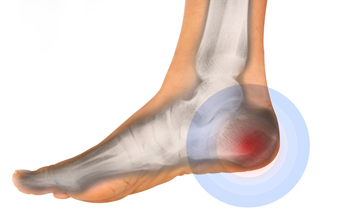 Sever’s disease impacts the growth plate in the heel, and normally takes the form of irritation or swelling. The disease is most common among children, especially those from the ages of 9-14 years during their growth spurt. Sever’s disease is also more likely to occur among children who are active in sports, especially basketball, gymnastics, and track. Symptoms may include swelling or redness of the heel, limping, stiffness of the feet in the morning, and pain when the heel is squeezed on both sides. To relieve discomfort, it is recommended to ice the affected area, wear shoes that are open in the back, and use a boot that limits the movement of the heel. For a proper diagnosis and treatment regime, we recommend you consult with a podiatrist for professional assistance.
Sever’s disease impacts the growth plate in the heel, and normally takes the form of irritation or swelling. The disease is most common among children, especially those from the ages of 9-14 years during their growth spurt. Sever’s disease is also more likely to occur among children who are active in sports, especially basketball, gymnastics, and track. Symptoms may include swelling or redness of the heel, limping, stiffness of the feet in the morning, and pain when the heel is squeezed on both sides. To relieve discomfort, it is recommended to ice the affected area, wear shoes that are open in the back, and use a boot that limits the movement of the heel. For a proper diagnosis and treatment regime, we recommend you consult with a podiatrist for professional assistance.
Sever's disease often occurs in children and teens. If your child is experiencing foot or ankle pain, see one of our podiatrists from New York Foot and Ankle. Our doctors can treat your child’s foot and ankle needs.
Sever’s Disease
Sever’s disease is also known as calcaneal apophysitis, which is a medical condition that causes heel pain I none or both feet. The disease is known to affect children between the ages of 8 and 14.
Sever’s disease occurs when part of the child’s heel known as the growth plate (calcaneal epiphysis) is attached to the Achilles tendon. This area can suffer injury when the muscles and tendons of the growing foot do not keep pace with bone growth. Therefore, the constant pain which one experiences at the back of the heel will make the child unable to put any weight on the heel. The child is then forced to walk on their toes.
Symptoms
Acute pain – Pain associated with Sever’s disease is usually felt in the heel when the child engages in physical activity such as walking, jumping and or running.
Highly active – Children who are very active are among the most susceptible in experiencing Sever’s disease, because of the stress and tension placed on their feet.
If you have any questions, please feel free to contact one of our offices located in Franklin Square, Bethpage, Bronx, and Brooklyn, NY. We offer the newest diagnostic and treatment technologies for all your foot and ankle injuries.
Read more about Sever's Disease